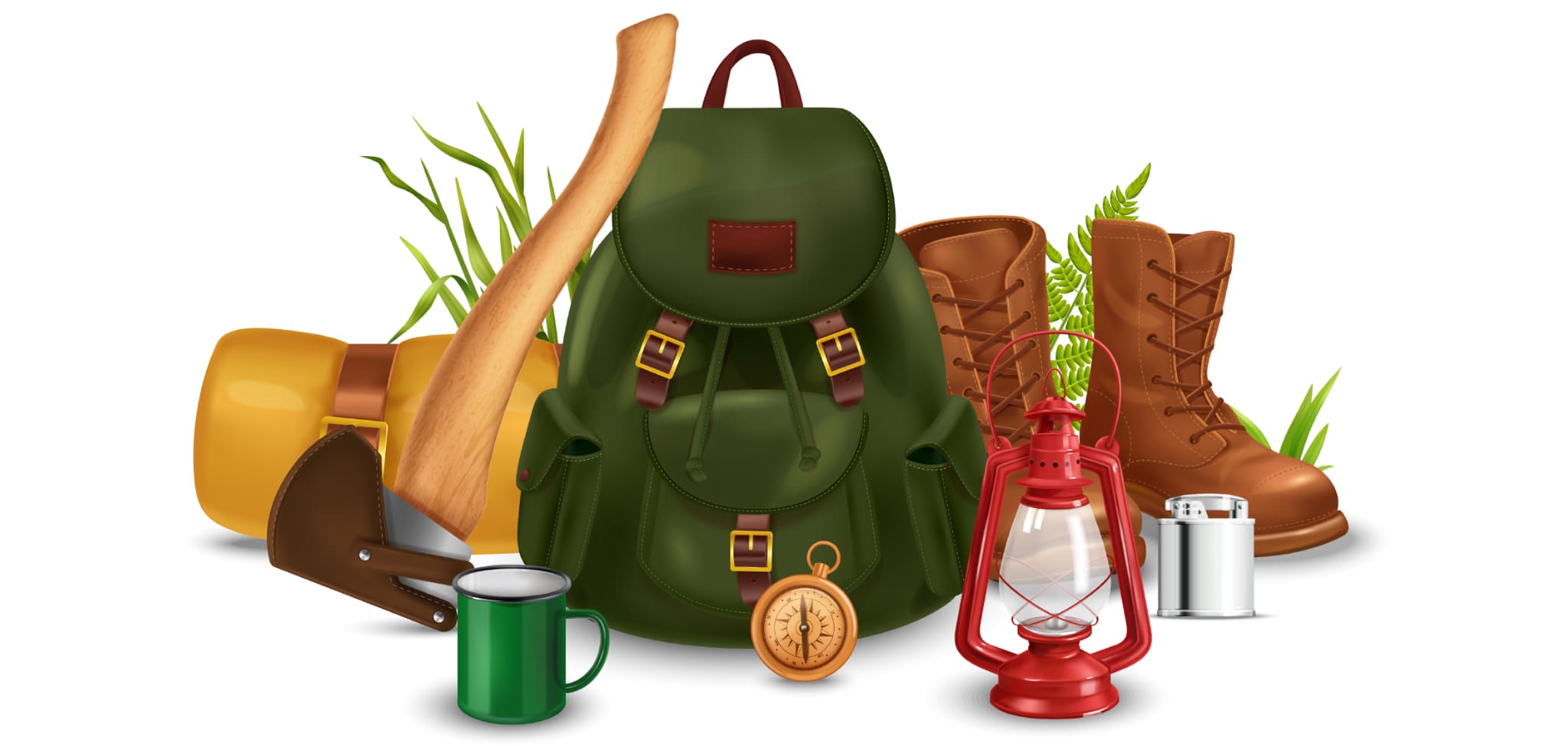A Comprehensive Beginner’s Guide to Camping Essentials
Camping is a fantastic way to escape the hustle and bustle of everyday life and immerse yourself in the beauty of nature. Whether you’re looking for a relaxing getaway or an adventurous outdoor experience, camping can provide the perfect opportunity to unwind and create lasting memories. If you’re new to camping, don’t worry! This comprehensive beginner’s guide will equip you with all the essential information you need to plan and enjoy your first camping trip with confidence.
Getting Started: Choosing the Right Shelter
When it comes to camping, choosing the right shelter is crucial for a comfortable and safe experience. The most common and beginner-friendly option is a tent. Tents come in various shapes, sizes, and levels of weather protection. Before making a decision, consider your specific needs, the weather conditions, and your level of experience.
When selecting a tent, keep the following factors in mind:
- Your needs: Tents are suitable for most campers, but it’s essential to consider factors such as age, physical limitations, and the number of people in your group. If you struggle with sleeping on the ground, look for more comfortable alternatives.
- Weather conditions: Tents don’t have air conditioning or heating, so it’s crucial to choose one that suits the climate you’ll be camping in. Consider ventilation options, rain protection, and insulation properties.
- Your experience level: Some tents are more complex to set up than others. If you’re a beginner, opt for a tent that is easy to assemble and comes with clear instructions. Practice setting it up at home before your trip to ensure you’re familiar with the process.
Tip: Always check the tent’s user manual and watch instructional videos before your camping trip to ensure a smooth setup process.
Tips for Pitching Your Tent
Once you’ve chosen your tent, it’s time to learn how to pitch it properly. Here are some essential tips for setting up your tent:
- Know your tent: Familiarize yourself with the type of tent you have and its specific assembly instructions. Different tents have varying setup processes, so it’s crucial to understand the unique features of your tent.
- Choose a level spot: Find a flat and level area to pitch your tent. Avoid places with rocks, tree roots, or potential water accumulation. Look for shade and consider the direction of the wind to ensure maximum comfort.
- Stake your tent securely: Use stakes to secure your tent to the ground. Place them deep into the soil and ensure they are firmly anchored. Be cautious when walking near stakes to avoid tripping hazards.
- Use a tarp for added protection: Even if the weather forecast doesn’t predict rain, it’s always a good idea to use a tarp underneath your tent. This extra layer will provide insulation and prevent moisture from seeping into your tent.
- Enhance comfort: Consider adding a footprint or groundsheet to protect your tent’s floor and provide an additional layer of insulation. This will also make it easier to clean your tent after your camping trip.
Exploring Lodging Options: Beyond Tents
While tents are the go-to option for many campers, there are alternative lodging choices that cater to different preferences and comfort levels. Consider these options to enhance your camping experience:
- Cabins: If you’re not ready to dive into tent camping, cabins offer a more comfortable and fully furnished alternative. They provide electricity, beds, and, in some cases, private bathrooms. Camping cabins are ideal for groups or individuals seeking a hassle-free camping experience.
- Glamping: Glamping, or glamorous camping, has gained popularity in recent years. It offers a luxurious and unique camping experience with pre-set tents or alternative lodging options such as yurts, treehouses, or renovated cabooses. Glamping is perfect for beginners who want to enjoy the outdoors without sacrificing comfort.
- RVs: Recreational vehicles (RVs) provide a flexible and convenient camping option. RVs offer the comforts of home, including a kitchen, bathroom, and sleeping areas. They are ideal for those who prefer a bit more luxury and convenience during their camping trips.
Tip: Research and choose the lodging option that best suits your needs and preferences. Consider factors such as the size of your group, desired amenities, and level of comfort.
Essential Camping Gear: What to Bring
To ensure a successful camping trip, it’s essential to pack the right gear. Here’s a comprehensive list of essential camping equipment:
- Sleeping Gear: Pack sleeping bags, sleeping pads, blankets, and pillows for a comfortable night’s sleep. Consider the weather conditions and choose sleeping bags suitable for the expected temperatures.
- Campsite Needs: Bring lighting essentials such as headlamps, flashlights, and lanterns to illuminate your campsite. Don’t forget to pack firewood, matches, lighters, and a water dispenser.
- Furniture and Decorations: Enhance your campsite’s comfort and aesthetics with camping chairs, tables, shade structures, and outdoor rugs. Insect-repellant candles can also help create a pleasant environment.
- Necessary Items: Pack hygiene items like towels, soap, shampoo, toothbrushes, and toothpaste. Don’t forget essentials like a first-aid kit, sunscreen, insect repellent, and plenty of water bottles.
- Kitchen Supplies: Bring cooking essentials such as pots, pans, utensils, plates, and cups. Consider a portable stove or grill for cooking meals. Don’t forget to bring food storage containers, trash bags, and cleaning supplies.
- Safety Equipment: Stay safe by packing a first-aid kit, a fire extinguisher, and a water filter or purifier if necessary. Make sure to have insect repellent and sunscreen on hand to protect yourself from bugs and sunburn.
- Pet or Children’s Supplies: If you’re camping with pets or children, bring their essentials, including leashes, food and water bowls, toys, and bedding. Pack any necessary medications and vaccination records.
Tip: Create a checklist to ensure you don’t forget any essential items. Double-check your gear before heading out on your camping adventure.
Dressing for the Outdoors: What to Wear Camping
Choosing appropriate clothing for your camping trip is essential to stay comfortable and protected from the elements. Consider the following clothing items when packing for your camping adventure:
- Layering: Dressing in layers allows you to adjust your clothing as the temperature fluctuates throughout the day. Pack long-sleeve shirts, lightweight tops, jackets, and underclothes for layering.
- Weather Protection: Bring rain gear, including a water-resistant coat, boots, and an umbrella. Don’t forget a sunhat or beanie and sunglasses to protect yourself from the sun.
- Footwear: Pack comfortable and sturdy shoes suitable for hiking and walking. Consider bringing hiking boots for more challenging terrains and comfortable sneakers for everyday use.
- Winter Clothing: If you’re camping in colder conditions, pack thermal layers, gloves, scarves, insulated coats, thick socks, and long pants to stay warm and comfortable.
Tip: Check the weather forecast before your trip to ensure you’re prepared for the expected conditions. Dressing appropriately will enhance your camping experience.
Meal Planning for Camping: Fueling Your Adventure
Proper meal planning is crucial to keep yourself fueled and satisfied during your camping trip. Consider the following tips when planning your camping meals:
- Plan Ahead: Create a meal plan before your trip to ensure you have all the necessary ingredients and equipment. Consider everyone’s dietary preferences and any specific food requirements.
- Prep at Home: Prepare and pre-cut ingredients, marinate meats, and pre-cook meals to save time and effort at the campsite. Use storage containers to keep everything organized and secure.
- Pack Non-Perishable Snacks: Bring a variety of non-perishable snacks like trail mix, granola bars, jerky, and dried fruits to keep you energized throughout the day.
- Kitchen Essentials: Pack cooking utensils, pots, pans, and grill equipment if needed. Don’t forget essential seasoning, oil, and condiments to add flavor to your meals.
- Enjoy Outdoor Cooking: Take advantage of the campfire or your portable stove to cook delicious meals outdoors. Consider classic camping recipes like grilled meats, foil packet meals, and s’mores for a traditional camping experience.
Tip: Check if your campground has any restrictions or guidelines regarding open fires and food storage. Always practice proper food safety and clean-up after each meal.
Choosing the Perfect Camping Location
The location of your camping trip plays a significant role in your overall experience. Consider the following factors when choosing a camping location:
- Goals and Interests: Determine the purpose of your camping trip. Are you looking to explore nature, visit historic sites, or engage in specific outdoor activities? Choose a location that aligns with your goals and interests.
- Seasonal Considerations: Research the best camping locations for the specific season you plan to visit. Consider factors such as weather, scenic views, and the availability of facilities.
- Accessibility: If you’re a beginner or camping with children, choose a location that is easily accessible and doesn’t require extensive hiking or backpacking. Look for campgrounds with amenities and facilities suitable for your needs.
- Proximity to Home: Camping closer to home has its advantages, such as easy access to forgotten items and the ability to seek help in case of an emergency. It also allows for shorter travel distances and more flexibility in scheduling.
- Exploring New Places: Exploring new destinations can be exciting and provide unique experiences. Consider camping in state or national parks, forests, or areas with cultural attractions and local festivals.
Tip: Research and book your campsite in advance, especially during peak seasons. Check online platforms like Recreation.gov or Hipcamp for campground reservations and availability.
Camping Etiquette: Leave No Trace
Respecting the environment and fellow campers is essential when camping. Follow these camping etiquette guidelines to ensure a positive experience for everyone:
- Maintain Quiet Hours: Be mindful of noise levels during designated quiet hours, especially early in the morning and late at night. Avoid shining flashlights towards other people’s campsites.
- Leave No Trace: Practice Leave No Trace principles by cleaning up after yourself and leaving your campsite better than you found it. Pack out all trash and dispose of it properly.
- Follow Campground Rules: Familiarize yourself with the campground rules and regulations. Respect any fire restrictions or specific guidelines provided by the campground management.
- Be Considerate of Wildlife: Observe wildlife from a distance and avoid feeding or approaching them. Store your food securely to prevent attracting animals to your campsite.
- Respect Other Campers: Be considerate of your fellow campers’ privacy and personal space. Keep noise levels to a minimum, especially during rest hours.
Tip: Educate yourself on the specific Leave No Trace principles and apply them to your camping practices. By doing so, you contribute to preserving the natural beauty of the outdoors.
Conclusion
Embarking on your first camping trip can be an exciting and rewarding experience. By following this comprehensive beginner’s guide, you’ll be well-prepared to plan and enjoy a successful camping adventure. From choosing the right shelter to packing essential gear, dressing appropriately, and practicing proper camping etiquette, you’ll have all the knowledge and tools to make your camping trip a memorable one. So, get out there, immerse yourself in nature, and embrace the wonders of camping. Happy camping!
RECENT POSTS
History of Baseball
History of Baseball: From Its Origins to Modern TimesBaseball is one of the most popular sports in the United States, with millions of fans tuning in to watch games each year. The sport has a [...]
Hunting Falconry
History of Hunting Falconry: An Overview of Falconry's Evolution and Significance Are you interested in learning about the ancient practice of hunting with trained birds of prey? Falconry has been practiced for thousands of [...]
Hunting Destinations in 2024
Hunting Destinations in 2024: Top Picks for Avid Hunters Are you looking for exciting hunting destinations to explore in 2024? Whether you're a seasoned hunter or just starting, there are plenty of options available [...]
History of hunting dogs
Explore the History and Significance of Hunting Dogs: A Comprehensive Guide If you're a hunting enthusiast, then you know the importance of having a reliable hunting dog by your side. Hunting dogs have been [...]
Hunting as a Hobby
Hunting as a Hobby: An Overview Hunting is a popular outdoor activity enjoyed by millions of people worldwide. While some hunt for food, others do it as a hobby. Hunting as a hobby can [...]










